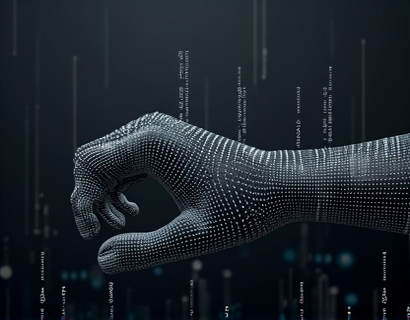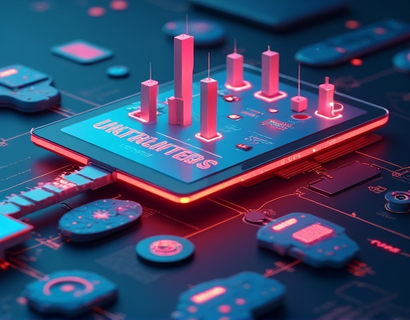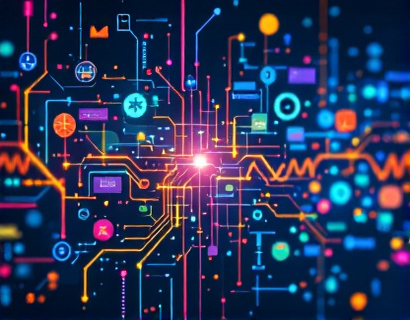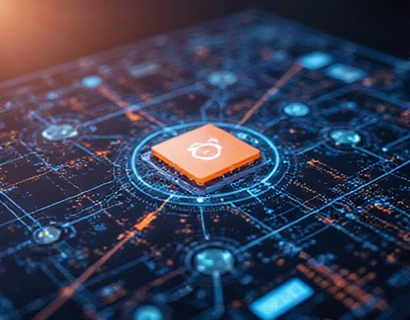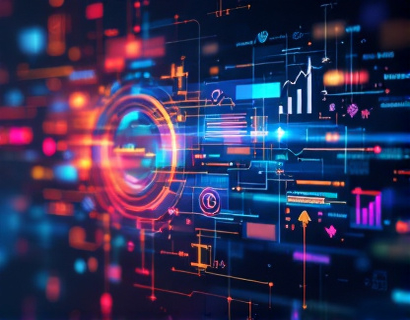Unleashing Advanced Digital Transformation: The Synergy of Crypto and AI
The intersection of cryptocurrency and artificial intelligence (AI) represents a frontier of digital innovation, promising to revolutionize app ecosystems and user experiences. This article delves into the transformative impact of merging these two cutting-edge technologies, exploring how they are reshaping the digital landscape for tech professionals and early adopters. By examining the synergy between crypto and AI, we can gain valuable insights into the future of digital transformation and the enhanced user experiences it enables.
The Convergence of Cryptocurrency and AI
The convergence of cryptocurrency and AI is not merely a technological curiosity but a powerful force driving digital innovation. Cryptocurrency, with its decentralized and secure nature, provides a robust foundation for AI applications that require trust, transparency, and efficiency. AI, on the other hand, brings intelligent automation and advanced data analysis to the table, enhancing the functionality and user experience of crypto-based solutions.
This synergy is evident in various applications, from smart contracts that execute automatically based on AI-driven conditions to decentralized finance (DeFi) platforms that use AI for risk assessment and portfolio management. The combination of these technologies fosters a new era of trustless, intelligent, and user-centric digital services.
Enhancing Security through AI-Driven Crypto Solutions
One of the most significant benefits of merging crypto and AI is the enhancement of security measures. Traditional cryptographic methods can be vulnerable to sophisticated attacks, but AI can significantly bolster security by detecting and mitigating threats in real-time. Machine learning algorithms can analyze vast amounts of data to identify patterns indicative of fraudulent activities, enabling proactive measures to protect user assets.
For instance, AI-powered systems can monitor blockchain transactions for anomalies and potential security breaches, providing an additional layer of protection. Smart contracts can be designed to self-audit and self-enforce, reducing the risk of human error and malicious intent. This fusion of technologies ensures that crypto transactions are not only secure but also transparent and verifiable.
Optimizing User Experiences with AI in Crypto Apps
AI-driven insights can greatly enhance the user experience in crypto applications. By leveraging natural language processing (NLP), chatbots and virtual assistants can provide users with personalized guidance and support, answering queries and facilitating transactions seamlessly. These AI-powered interfaces can understand user intent and context, offering tailored recommendations and solutions.
Moreover, AI can optimize the user interface and experience by analyzing user behavior and preferences. Machine learning algorithms can adapt the app's layout, features, and functionalities to suit individual users, creating a more intuitive and user-friendly environment. This level of personalization not only improves user satisfaction but also increases engagement and retention.
Decentralized Applications and AI-Driven Services
Decentralized applications (dApps) are at the forefront of the crypto-AI convergence, offering a new paradigm for digital services. These applications run on blockchain networks, ensuring decentralization, transparency, and security. AI can further enhance dApps by providing intelligent services that traditional apps cannot match.
For example, AI can power decentralized prediction markets, where users can bet on future events using smart contracts. These markets can analyze vast amounts of data to predict outcomes with higher accuracy, offering users better chances of making informed decisions. AI-driven portfolio management tools can also optimize asset allocation and risk management in decentralized finance, providing users with more robust and adaptive investment strategies.
Data Privacy and AI in Crypto Ecosystems
Data privacy is a critical concern in the crypto space, and AI can play a pivotal role in addressing these issues. Privacy-enhancing technologies, such as zero-knowledge proofs and homomorphic encryption, can be combined with AI to ensure that user data remains confidential while still being useful for intelligent applications. AI can process and analyze encrypted data without compromising privacy, enabling secure and privacy-preserving data sharing and collaboration.
Furthermore, AI can help in compliance with regulatory requirements by monitoring and ensuring that data handling practices adhere to privacy laws and standards. This dual focus on security and privacy makes crypto-AI solutions highly attractive for users who value both their digital assets and personal information.
Innovative Business Models through Crypto and AI
The integration of crypto and AI opens up new business models that can disrupt traditional industries. For instance, tokenized economies powered by AI can create new revenue streams and incentivize user participation. Tokens can represent various assets or services, and AI can manage the distribution, trading, and utility of these tokens in a fair and transparent manner.
Decentralized autonomous organizations (DAOs) are another innovative concept that benefits from the crypto-AI synergy. DAOs use smart contracts and AI to govern and manage community-driven projects, ensuring democratic decision-making and efficient resource allocation. This model can revolutionize how organizations operate, making them more agile, transparent, and user-centric.
Challenges and Considerations
While the potential of combining crypto and AI is immense, there are several challenges and considerations that must be addressed. One of the primary concerns is the regulatory landscape, as both crypto and AI are still evolving areas with varying levels of regulation across different regions. Ensuring compliance and navigating the legal complexities is crucial for the successful deployment of these technologies.
Another challenge is the technical integration of crypto and AI systems. Developing robust and scalable solutions that can handle the computational demands of AI while maintaining the security and efficiency of blockchain networks requires expertise and innovation. Additionally, there is a need for standardization and interoperability to facilitate seamless interactions between different crypto-AI applications.
Future Prospects and Opportunities
The future of crypto and AI is bright, with numerous opportunities for growth and innovation. As technology advances, we can expect more sophisticated AI algorithms that can process and analyze data from blockchain networks more efficiently. This will lead to more intelligent and autonomous crypto applications, further enhancing user experiences and driving adoption.
Moreover, the rise of quantum computing presents both challenges and opportunities. While quantum computers could potentially break current cryptographic methods, they also offer the potential for faster and more secure computations. AI can play a crucial role in developing quantum-resistant algorithms, ensuring the long-term security of crypto-AI systems.
In conclusion, the merging of cryptocurrency and artificial intelligence is a powerful force reshaping the digital landscape. By enhancing security, optimizing user experiences, and enabling innovative business models, this synergy is paving the way for a more intelligent, secure, and user-centric future. Tech professionals and early adopters have a unique opportunity to explore and contribute to this exciting frontier, shaping the next generation of digital solutions.




